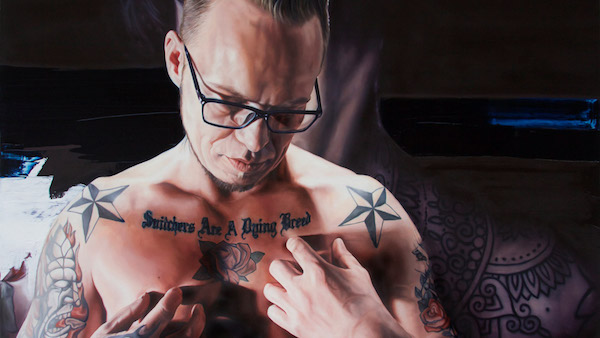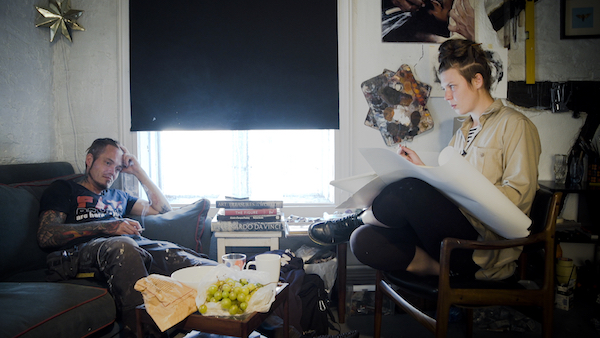Striving for objectivity in documentaries is an impossible goal. Every creative choice is subjective, from equipment to lighting and composition. Deciding what to cover may be the most subjective choice of all, and the dynamic between documentarian and subject is fraught with moral ambiguities.

Director Benjamin Rees scrambles that dynamic in The Painter and the Thief, an examination into the puzzling burglary of an Oslo art gallery. By turns intriguing and infuriating, the documentary follows the two people central to the crime as they try to refocus their lives.
Rees was drawn to a 2015 case in which two works by Czech painter Barbora Kysilkova were stolen from Gallery Nobel. Surveillance cameras helped police identify and arrest two burglars, who received short prison sentences.
Kysilkova started a relationship with one of the thieves, Karl-Bertil Nordland, who agreed to sit for a portrait. Over the next three years they continued to meet, despite significant personal setbacks to each.
In the first half of the film Rees concentrates on Kysilkova, filming how she works in her studio, scenes with her boyfriend, and her reaction to meeting Nordland. Kysilkova doesn’t reveal much about her own life, but is fascinated by Nordland’s, much to her boyfriend’s irritation. Hard-bitten, covered with tattoos, Nordland has a junkie’s bravado, bragging about his awful past. Only two of his teenage friends survive, for example, the others victims of murder, suicide, and ODs.

The second half of the documentary is weighted towards Nordland, who in talking about Kysilkova reveals crucial details about her past: her interest in sexual violence, her relationship with an abusive lover, her debts. Rees shoots her couples therapy sessions, where she seems surprised when confronted by her boyfriend about her shortcomings.
Rees achieves levels of intimacy with Kysilkova and Nordland that are distinctly uncomfortable. They also raise questions about how complicit his subjects were. Are they behaving this way because the camera is on them? Did Rees’ presence encourage them to act out? Would they have avoided certain mistakes otherwise? Should Rees have helped them instead of pretending objectivity?
D.A. Pennebaker famously said when shooting he didn’t want to be a fly on the wall, but “the friend in the room.” When he is shooting Kysilkova struggling with her work, or Nordland adjusting to life in Halden Prison, Rees may want them to succeed, or may just want good material for his film. Although it may not have been his goal, the process of making a documentary clearly helps both Kysilkova and Nordland—or at least by the end, they seem to be in better places.
Rees works in a straightforward manner, adapting to whatever is available to him: phone calls, TV reports, smartphone videos. His documentary is similar in style to Helena Třeštíková’s René, which covered several years in the life of a habitual criminal. Like that documentary, events occur in The Painter and the Thief which make it impossible for Rees to maintain objective distance from what is happening.
Inadvertently or not, The Painter and the Thief reveals a Norwegian society that, at least compared to the United States, takes a radically more empathetic approach to social services. For a confirmed addict and criminal, Nordland receives remarkable treatment, both during a hospital stay and when sentenced to Halden Prison. (Check out Danish filmmaker Michael Madsen’s fascinating short about Halden in the feature-length doc Cathedrals of Culture.) And Kysilkova may struggle with money, but is still able to pursue a career as an artist.
The Painter and the Thief screened at the 2020 Sundance festival. Neon had planned a theatrical release, but it is now another virus-related casualty available on streaming platforms, for example this IFP screening.


